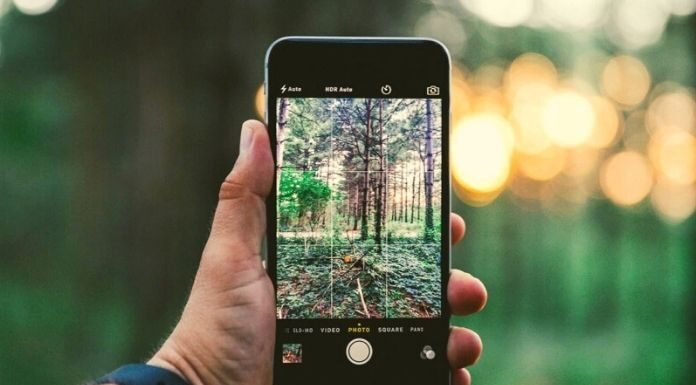If you have a recent iPhone, we will explain how to take beautiful photos by activating the long exposure. The iPhone 13 Pro can capture stunning photos of some of the best you can get from a smartphone. Even the iPhone SE, Apple’s cheapest smartphone, can take gorgeous shots that you wouldn’t necessarily expect from such an affordable mobile. These models or any other iPhone launched after iPhone 6 have a creative trick that turns everyday images into artistic long-exposure shots.
A long exposure photograph is obtained by leaving the shutter open for several seconds, which increases the brightness (practical at night) and blurs the movements. One of the most common examples is waterfalls where the raging torrent has been softened into a wispy flow. This is the extended exposure technique, also called prolonged exposure. Taking these images with a DSLR usually requires a tripod to hold the camera steady and a filter that limits the light if you’re shooting in daylight. The iPhone uses a different, much more clever technique, which does not require any additional equipment.
This is Live Photos, a function that transforms a still image into a short animation by recording a few seconds of video when the shutter is triggered. The iPhone analyzes the image, isolates moving objects, and blurs them. It can also recognize what is not moving (a rock or a wall, for example) and retain the sharpness of these objects. This method allows you to capture images with a long exposure effect without a tripod or filter, even in direct sunlight. We explain how to proceed.
What Makes An Excellent Extended Exposure Photo?
Only one out of every odd scene fits a vast openness. A nearby blossom supported in the breeze will just obscure, while a photograph of a stationary vehicle will stay fixed. What is required is a scene with both fixed and moving components. The cascades are normal subjects, as the hurrying water is obscured while the stones stay sharp. Water is a decent subject for trial and error.
Occupied city roads are likewise a decent beginning stage. On account of the long openness impact, structures and streets will stay sharp and fixed while individuals strolling will be obscured like spooky outlines. It likewise works extraordinarily with vehicles around evening time as the headlights will jump out as excellent splendid and vivid lines.
Enable Live Photos
In Live Photos mode, the iPhone records what happens in 1.5 seconds when a photograph is taken. We utilize the development recorded in a Live Photo to take a lengthy openness photograph. This mode is situated at the upper right of the camera screen (when held in representation direction) or at the upper left (in scene direction). Live Photo is a symbol made of two circles encompassed by a third dabbed circle. On the off chance that a line doesn’t cross it out, Live Photos is actuated. Assuming it’s crossed out, tap the symbol, and you’ll see the message “Live” appear on screen in a little yellow box.
Stay As Still As Possible
Albeit the iPhone doesn’t need a stand to get a superb extended openness picture, you’ll improve results assuming you hold the telephone as consistent as conceivable while it snaps the Photo. Our recommendation: get familiar with the phone against a divider or other fixed surface while shooting.
Assuming you should grasp the telephone, embracing your elbows to your chest while pausing your breathing decreases undesirable development. Another great tip: bring a few photographs while holding down the shade button. This expands your odds of catching something like one stable picture to the point of creating an intriguing extended openness.
Create Long Exposure
Once you’ve saved your live image, it’s time to turn it into a long exposure. If you haven’t upgraded to iOS 15 yet, here’s how:
- Open the chosen Photo from your gallery.
- Swiping the screen upwards will bring up a panel called Effects.
- Scroll down to the end of the effects panel, and you’ll see a Long Exposure button.
- Press it after a second or two. You will see that all the movements in your shot have been blurred to produce the dreamlike effect you are looking for.
If you have moved up to iOS 15, the strategy is significantly more precise; you need to choose Long openness in the drop-down menu at the upper left of the screen, at the LIVE level. Go ahead and apply a similar impact to other photographs you’ve taken of a similar scene if they look better.
Explore Your Photo Library
Before hurrying off to find the closest cascade, take a gander at your photo library to check whether you, as of now, have any pictures that may be reasonable for a vast openness. The massive benefit of the iPhone’s bulb device is that you don’t need to utilize it while shooting. You can apply it to any photograph that may get this impact sometime later.
On the off chance that Live Photos was on when you took a portion of your photographs, you could empower bulb openness on any of them. You can even peruse your Live Photos collection in your exhibition to see every one of the pictures you have on your telephone that can be transformed into a vast openness.
Also Read: The Ten Best Tips And Tricks For Google Maps

